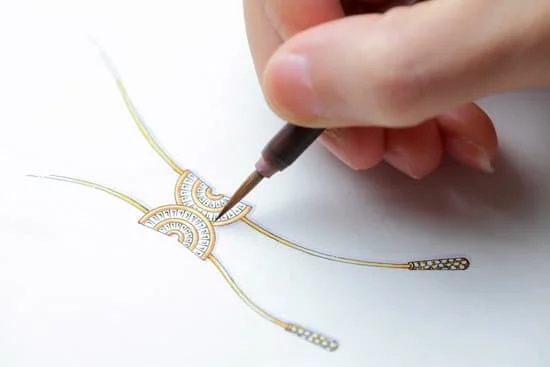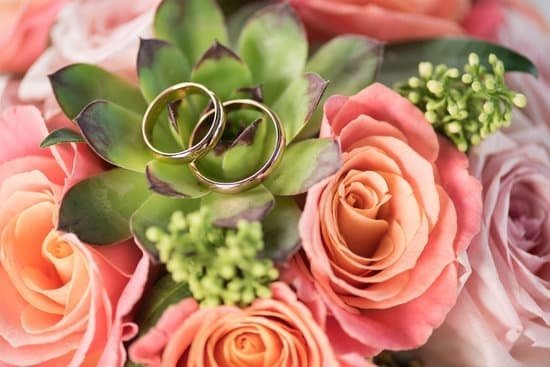Jewelry has been an integral part of human history for thousands of years, serving as a symbol of status, cultural significance, and personal expression. This article provides a brief history of jewelry through the ages, highlighting its evolution from ancient times to modern-day trends. From the use of natural materials to the mass production of jewelry during the Industrial Revolution, the significance and styles of jewelry have varied greatly over time.
Throughout history, jewelry has held a significant place in various cultures, often playing a role in religious and cultural practices. The adornment of jewelry was not only a means of displaying wealth and status but also served as a form of protection or as symbols of faith and spirituality. Additionally, jewelry has been closely linked to fashion trends, with different time periods leaving their mark on the designs and materials used in creating these ornamental pieces.
The Renaissance period marked a significant shift in jewelry design and craftsmanship, influencing fashion trends for centuries to come. This era saw a revival of the classical art forms and an increased interest in luxurious adornments, showcasing intricate designs using precious gemstones and metals. As society progressed into modern times, the industrial revolution brought about changes in the production process leading to mass-produced jewelry becoming more accessible to wider audiences.
Ancient Jewelry and Its Cultural and Religious Significance
Jewelry has been an integral part of human history for centuries, with ancient civilizations using it as a form of cultural and religious expression. Throughout the ages, jewelry has played a significant role in the lives of people from different cultures, serving as symbols of wealth, power, and spirituality.
In ancient times, jewelry was not only worn for aesthetic purposes but also held deep cultural and religious significance. The materials used and the designs of these pieces often reflected the beliefs and traditions of the civilization. For example:
- In ancient Egypt, jewelry was not only a symbol of wealth and status but also had religious significance. Amulets and talismans were commonly worn by both the living and the deceased to protect them in the afterlife.
- In ancient Greece, jewelry was intricately designed with symbols representing various gods and goddesses. Pieces such as earrings, bracelets, and necklaces were adorned with motifs reflecting Greek mythology.
- In ancient India, jewelry was crafted using a variety of precious metals and gemstones. These intricate pieces held symbolism related to marriage, religious rituals, and social status within the caste system.
These are just a few examples that demonstrate how ancient jewelry played a crucial role in cultural and religious practices throughout various civilizations.
The significance of ancient jewelry can also be seen in archaeological discoveries where artifacts have been found providing insight into the beliefs and customs of these early societies. Whether it’s intricate gold ornaments from Mesopotamia or jade carvings from Mesoamerica, ancient jewelry offers a glimpse into the rich tapestry of human history.
Jewelry in the Renaissance Period and Its Influence on Fashion
The Renaissance period from the 14th to the 17th century was a time of great cultural and artistic growth in Europe. This era witnessed a revival of interest in ancient Roman and Greek art, which had a significant impact on jewelry design and fashion. During this time, jewelry became an important accessory that reflected social status, wealth, and personal style.
Renaissance Jewelry Design
Renaissance jewelry was characterized by intricate designs, vibrant colors, and the extensive use of gemstones. Necklaces, rings, earrings, pendants, and brooches were popular among both men and women. Jewelry designs were influenced by classical themes such as vines, leaves, flowers, and animals. Filigree work and enameling techniques also became prominent in Renaissance jewelry.
Influence on Fashion
The elaborate and ornate nature of Renaissance jewelry had a significant influence on fashion during this period. Clothing styles were often designed to showcase the beauty of jewelry pieces. Necklaces were worn with low-cut dresses to highlight the neckline, while hairstyles were often adorned with pearls or gemstone-encrusted hairpins. The popularity of large statement pieces became a defining feature of Renaissance fashion.
Cultural Significance
Jewelry during the Renaissance period held strong cultural significance as well. It was not only a symbol of wealth but also carried religious connotations. Jewelry often featured themes related to Christianity and was worn as an expression of faith or devotion. Certain gemstones were believed to possess mystical powers and were worn for their supposed healing properties.
The influence of Renaissance jewelry on fashion extended beyond its own time period, shaping trends for centuries to come. The elaborate designs and use of precious materials continue to inspire contemporary jewelry designers around the world.
The Industrial Revolution and the Mass Production of Jewelry
The Industrial Revolution had a significant impact on the jewelry industry, leading to the mass production of jewelry and making it more accessible to a wider population. This period marked a shift from traditional handcrafted jewelry to the use of machinery and assembly lines for production. The introduction of new technologies allowed for faster and cheaper production, revolutionizing the way jewelry was made and consumed.
During the Industrial Revolution, advancements in metallurgy and gemstone cutting techniques enabled jewelers to experiment with new designs and styles. With the ability to produce jewelry in larger quantities, there was also a proliferation of different types of jewelry, catering to various tastes and preferences. This period saw the rise of costume jewelry, which allowed individuals to adorn themselves with fashionable pieces at an affordable price point.
Furthermore, the Industrial Revolution also led to changes in design aesthetics as well as the type of materials used in jewelry making. Jewelry became more ornate and elaborate, featuring intricate detailing and larger gemstones. In addition, the introduction of new materials such as platinum and aluminum expanded the possibilities for creativity in jewelry design.
- The use of machinery revolutionized the production process.
- Advancements in metallurgy led to experimentation with new designs and styles.
- The rise of costume jewelry made adornment more accessible for a wider population.
The Rise of Modern and Contemporary Jewelry Designs
Shift in Design Aesthetics
Modern and contemporary jewelry designs moved away from the traditional and ornate styles of previous eras, and embraced minimalist, sleek, and avant-garde aesthetics. Designers began experimenting with unconventional materials, such as plastic, glass, and even non-precious metals, challenging the traditional notion of what constitutes “fine jewelry”.
Influence of Art Movements
The rise of modern and contemporary jewelry designs was greatly influenced by art movements such as Art Nouveau and Art Deco. These movements emphasized the importance of craftsmanship, innovation, and individuality in design, which significantly impacted the way jewelry was conceptualized and created.
Technological Advancements
The development of new technologies also played a significant role in shaping modern jewelry design. Techniques such as laser cutting, 3D printing, and CAD/CAM enabled designers to push the boundaries of what was possible in terms of creating intricate and complex designs. This paved the way for a new era of innovative and boundary-pushing jewelry.
Overall,the rise of modern and contemporary jewelry designs marked a turning point in the history of jewelry-making. It opened up new avenues for creativity, self-expression, and experimentation that continues to influence the industry to this day.
The Impact of Different Materials on Jewelry Trends Throughout History
Jewelry has been a part of human history since the beginning of civilization, with evidence of its existence dating back thousands of years. Throughout the ages, various materials have been used to create jewelry, each leaving a distinctive mark on the trends and styles of their respective time periods.
One of the earliest materials used for jewelry was metal, particularly gold and silver. In ancient civilizations such as Egypt and Mesopotamia, gold was considered a divine metal and was often used in religious and burial jewelry. This cultural significance of precious metals continued through the Middle Ages and Renaissance period, where intricate designs and gemstone embellishments became popular.
Another significant material in the history of jewelry is gemstones. From the use of lapis lazuli in ancient Mesopotamia to the prominence of diamonds during the Renaissance, different gemstones have shaped jewelry trends throughout history. The discovery of new sources or mining techniques often led to shifts in popularity for certain gems, such as the influx of pearls from Asia during the Roman era or the spread of turquoise from Persia during the Victorian age.
Additionally, advancements in technology have introduced new materials to jewelry making. With industrialization came the ability to produce costume jewelry using materials like glass, plastic, and base metals. This mass production allowed for more affordable options and influenced fashion trends by making statement pieces accessible to a wider audience.
Overall, different materials have consistently impacted jewelry trends throughout history, reflecting cultural beliefs, technological advancements, and economic factors. The use of metals, gemstones, and innovative materials continues to evolve in modern and contemporary designs as artisans push boundaries with sustainable alternatives and experimental compositions.
| Materials | Impact on Jewelry Trends |
|---|---|
| Gold & Silver | Cultural significance; intricate designs; religious use |
| Gemstones | Influence on style; new sources impact popularity |
| Industrial Materials | Mass production; affordability; influence on fashion trends |
Famous Jewelry Pieces and Their Historical Significance
Throughout history, there have been numerous iconic jewelry pieces that have captured the imagination of people and played significant roles in various historical events. One such piece is the Hope Diamond, a large, 45.52-carat blue diamond that has been surrounded by mystery and superstition for centuries.
Believed to have originated from India’s Golconda mines, the Hope Diamond has passed through the hands of many famous owners, including King Louis XIV of France and Marie Antoinette. Its deep blue color and sheer size make it one of the most famous gemstones in the world.
Another renowned jewelry piece is the Cullinan Diamond, which was discovered in South Africa in 1905. Weighing an astonishing 3,106 carats in its rough state, it remains the largest gem-quality diamond ever found.
The Cullinan Diamond was ultimately cut into several smaller diamonds, with the two largest stones now forming part of the British Crown Jewels. Its discovery not only bolstered South Africa’s reputation as a major source of diamonds but also sparked international interest in this precious gemstone.
Moving into more contemporary times, one cannot overlook the impact of Elizabeth Taylor’s jewelry collection. The legendary actress owned some of the most extraordinary pieces of jewelry, including La Peregrina Pearl, a 50-carat pear-shaped pearl once worn by European royalty. Her lavish collection brought attention to historical and culturally significant pieces while contributing to modern jewelry trends.
These iconic jewelry pieces not only hold immense financial value but also serve as cultural artifacts that reflect their respective time periods’ aesthetic tastes and societal norms.
| Famous Jewelry Piece | Historical Significance |
|---|---|
| Hope Diamond | Mystery and superstition surrounding its origin and ownership; significant moments in history |
| Cullinan Diamond | Largest gem-quality diamond ever found; influenced global interest in South Africa as a source of diamonds |
| Elizabeth Taylor’s Collection | Showcased historical and culturally significant pieces; contributed to modern jewelry trends |
The Future of Jewelry
Jewelry has undoubtedly played a significant role in human history, with its cultural, religious, and fashion significance evolving over the centuries. From ancient times to the present day, jewelry has served as a symbol of status, wealth, and personal expression. Looking back at the brief history of jewelry through the ages, we can see how it has evolved alongside advancements in technology, changes in society, and shifts in fashion trends.
As we move into the 21st century, the future of jewelry holds promising trends and innovations. With advancements in technology and design, contemporary jewelry is now embracing sustainability and ethical practices. The demand for socially responsible jewelry that focuses on fair trade and environmentally friendly sourcing is on the rise. In addition to this, modern innovations such as 3D printing have given rise to new possibilities for creating intricate and unique jewelry pieces.
One of the defining trends in 21st-century jewelry is the emphasis on individuality and personalization. Customizable jewelry that allows individuals to create bespoke pieces that reflect their personality and style preferences is becoming increasingly popular.
With the use of advanced software and technology, jewelry designers can now cater to the specific needs of each customer, offering an unparalleled level of customization. As we look ahead to the future of jewelry in the 21st century, it’s clear that innovation and creativity will continue to drive this timeless art form forward.
Frequently Asked Questions
How Has Jewelry Changed Over the Years?
Jewelry has changed over the years in terms of materials, designs, and trends. In ancient times, it was mainly made from natural materials like beads and shells. Today, it can be made from precious metals, gemstones, and even technology.
What Are the Oldest Forms of Jewelry?
The oldest forms of jewelry date back to prehistoric times when early humans adorned themselves with items like animal teeth, bones, and feathers. These were likely worn for spiritual or symbolic purposes rather than for decorative reasons.
When Did Humans Start Wearing Jewelry?
Humans started wearing jewelry as early as 25,000 years ago during the Upper Paleolithic period. Archeological findings have unearthed evidence of jewelry in various ancient civilizations, indicating that adorning oneself with ornaments is a practice as old as civilization itself.

Welcome to my jewelry blog! My name is Sarah and I am the owner of this blog.
I love making jewelry and sharing my creations with others.
So whether you’re someone who loves wearing jewelry yourself or simply enjoys learning about it, be sure to check out my blog for insightful posts on everything related to this exciting topic!





